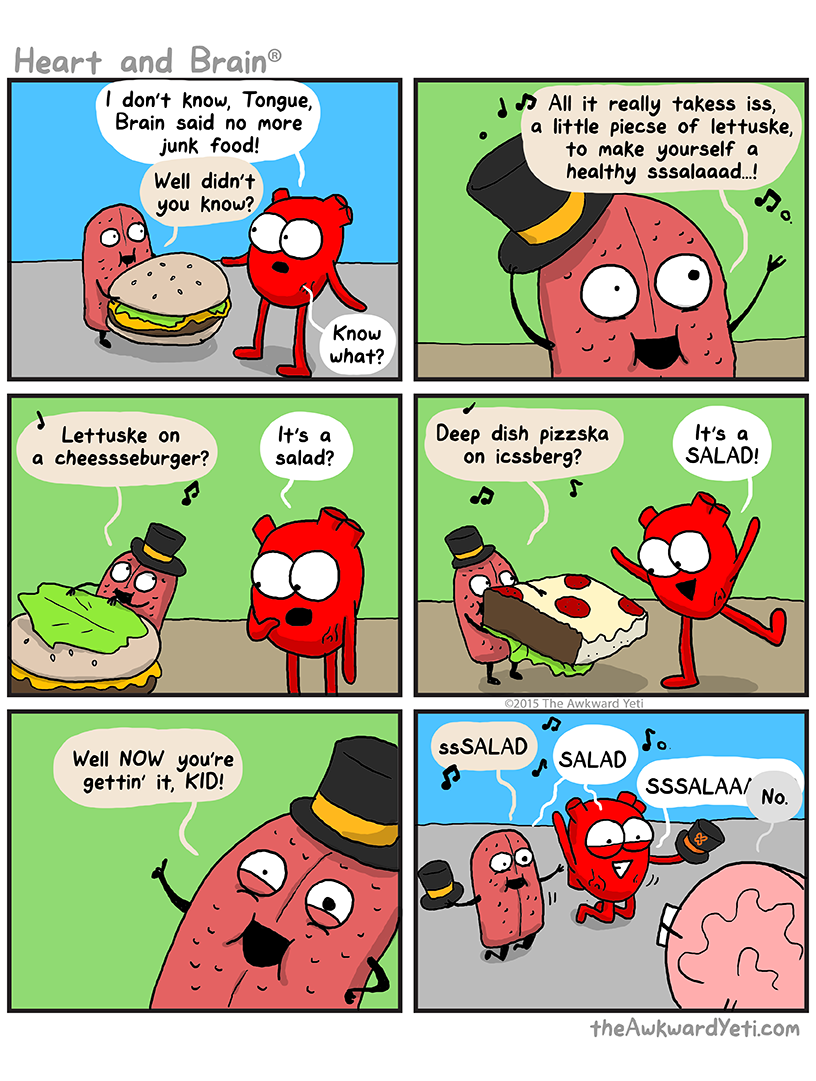As far as holidays go, Hanukkah sucks. Contrary to the popular public-school-kid myth, eight days of presents doesn’t mean the holiday is super-Christmas; it means the presents are junk, a proliferation of crap. Dreidl is a terrible game that requires no strategy and practically no skill. Somehow, the world’s entire gelt supply seems to have been manufactured in 1993, so even if you do win, your reward is stale, filmy-white, sub-par chocolate. Worst of all, Jews are forever manufacturing kitschy alternatives to Christmas customs: What’s with the Hanukkah bear, anyways? Arguably, latkes are one merit of the Festival of Lights, but woe to the holiday that relies upon potatoes as its only defense.
The story of Hanukkah doesn’t even appear in the Torah—the books of 1 and 2 Maccabees are in the Catholic Bible, not the Hebrew one. The saga is briefly described in the Talmud—a tale of armed Jewish rebellion against the Hellenistic King Antiochus IV, paired with a parable about miracle oil that kept the eternal flame of the Temple burning for eight nights when it should have only lasted for one. It is both theologically thin and celebratory of violent nationalism. For most of Jewish history, the holiday has been of little consequence. “Hanukkah is … a minor holiday that America has elevated into something much more,” said Josh Plaut, the head rabbi at the Reform Metropolitan Synagogue in New York City. “Jews have been part of that magnification of Hanukkah. It suits our purposes.”
Related Story
Hanukkah With the Jews for Jesus
So why, in America, has Hanukkah taken on outsized significance? Because it serves a particular purpose: an opportunity to negotiate the twin, competing pressures of ethnic tension and assimilation. As the Rowan University historian Dianne Ashton writes in her book, Hanukkah in America, “Hanukkah’s strongest American advocates seem to have been those who felt the complexities of American Jewish life most acutely.” It’s so simple, so conveniently vague, that it has been used by rabbis, advertisers, Zionists, Hebrew school teachers, and parents to promote everything from ethnic pride and nationalism to engagement in Jewish life and buying stuff.
No doubt, Hanukkah is an incredibly important part of the story of Jews in America. Why, then, is this holiday—the most public Jewish celebration in the United States—so silly?
* * *
Like much of Jewish American life, Hanukkah’s evolution in the U.S. is a story of immigrants. In the 19th century, the Jewish population in the United States was very small—roughly 250,000 by 1880, Ashton estimates. As different groups of immigrant Jews came to the country from central and Eastern Europe, a debate emerged: “What is going to be the form of Judaism that will thrive in the United States?” Ashton said. Many of the institutions of Jewish life, such as schools and synagogues, were in Europe; coming to America was starting over, and in a very new context. “Freedom of religion was a shocking experience,” she said. “Jews had not encountered that before.”
In the middle of the 19th century, some of the first Jews to promote Hanukkah in America were the rabbis who led the Reform Movement, which was largely based in Cincinnati, Ohio. Their Judaism was intellectual and sermon-heavy—“it really had nothing for the kids,” Ashton said. So “they came up with this idea of a synagogue festival for kids at Hanukkah as a way to interest kids in the synagogue: candle-lighting, singing songs, teaching the kids little skits, and then treating them to oranges and ice cream.”
During this period in American history, Hanukkah wasn’t really celebrated in the home beyond the lighting of the menorah, Ashton said, but it did have certain domestic qualities. “The rabbis would stand up in the front [of the synagogue] and talk to the kids, but the women organized the kids, and fed the kids, and taught the kids the songs,” she said. This, in itself, was another way of reinforcing synagogue life, creating a role for women in promoting children’s education.
This was in keeping with a larger trend in American culture: a sentimental Victorian fascination with domesticity. A number of home-based festivals, such as birthday parties, emerged in the second half of the 19th century, and Hanukkah crept toward the home along similar lines. One of the Cincinnati rabbis, Isaac Mayer Wise, purposefully played into this. Over the course of 39 weeks around 1860, he serialized a romance novel based on the story of the Maccabees, playing into Victorian tropes like “religious virtues, patriotism, and strong gender distinctions,” Ashton writes. This was a way of educating Jews about Hanukkah, but it was also a form of reassurance: Yes, Jews could be part of American culture.
“That’s the cheap and dirty way of looking at it—that Hanukkah is penis envy.”
Elsewhere in the United States, some Jewish communities were wary of their surrounding culture. “Immigrant Jews had a deep and abiding anxiety about Christmas—this commercialized, merry, fun, sparkly Christmas was altogether new to them,” said Jenna Weissman Joselit, a professor of history at George Washington University. Toward the end of the 19th century, as more and more kids entered public schools, this fear grew. “The Yiddish press, particularly the Jewish Daily Forward, sought to explain America to these new immigrants,” she said. “They spent a lot of time trying to defang Christmas and assuage any concerns that pogrom was at their doorstep.” Memories lingered from events like the Warsaw pogrom of 1881, when Jewish businesses were destroyed and their owners attacked for two days around Christmas time.
If only by an accident of timing, Hanukkah served as a counter-balance to this fear of Christmas in Jewish communities—its celebration was a way of asserting Jewish identity. There may have been mild elements of competition to it, too. “That’s the cheap and dirty way of looking at it—that Hanukkah is penis envy, that Jews need to have their own equivalent of Christmas,” Weissman Joselit said. But it also marked all sorts of other things, such as Jews’ economic success, especially in places like New York City. “Immigrants needed reassurance that they were succeeding, that this gamble of coming to the U.S., to this new country an ocean away from everyone they know, was worth [it],” Ashton said. “One measure of success was being able to buy presents for their children.”
And so the Hanukkah industry emerged. Yiddish newspapers made money by running advertisements for gifts—“‘presents’ was one of the earliest words that appeared in English in Yiddish newspapers,” Ashton said. Restaurant owners crafted special dishes for the holiday; shopkeepers made toys for parents to buy. This commercialization had the effect of “undermining traditional religious authority, empowering ordinary Jews, and tying religion inextricably to the market,” Ashton wrote.
As Jews suburbanized in the middle of the century, the holiday suburbanized along with them, Weissman Joselit said. The kid-centered-ness of Hanukkah fit well with broader Leave It To Beaver norms of American culture. “I came across recipes [from] the ‘40s and ‘50s: little Maccabees fashioned out of cottage cheese or tuna fish,” she said.
As Hanukkah grew, so did the complexities of American Judaism. The holiday had been connected with Zionism for decades before the 1950s; Theodore Herzl, one of the founders of the movement, “placed the celebration of Hanukkah in the center of the modern Jew’s capacity to bolster one’s own self-respect while living as a minority,” Ashton writes. But particularly in the ’60s and ’70s, American Jews found urgency in the story of the Maccabees because of political affairs in Israel, Weissman Joselit said. Once again, some believed, Jews were an embattled minority in a strange land. Once again, their fate was unsure.
Too, many Jews felt like an embattled minority in the United States. “There was a commitment in American Jewry writ large, based on the European experience, that a mixture of government and religion just never augured well for the Jews,” said Marc Stern, a lawyer at the American Jewish Committee. “That mix was ideologically repugnant.”
“The religious events that have more significance—you can’t play around with them as easily.”
In the 1970s and ’80s, these feelings contributed to a curious set of legal battles within the Jewish community. In 1973, the Chabad-Lebuvitch Rebbe Menachem M. Schneerson began a campaign: Help Jews across America light the menorah on Hanukkah. Religious law commands Jews to light the menorah on Hanukkah, preferably in public. In addition to distributing tin candleholders, the organization orchestrated and sponsored menorah lightings in American parks, city halls, and village greens—on government-held land, in other words. By 1979, President Jimmy Carter was participating in a lighting ceremony.
These public displays made many Jews uncomfortable. The Chabad campaign tested the “bulk of the Jewish community’s repudiation of the separation of church and state,” Stern said. “As a tactic, it was thought that the best way to avoid Christian symbols—with all their power, because they’re the majority, they’re the norm, and because in many places we weren’t going to match them one-for-one—[was] if we simply gave up on government and did our own thing.” And always, there was that lingering fear of violence against the Jewish community. “There were still, 25, 30 years ago, Jews who believed: Keep your head down. Don’t call attention to yourself. The menorah campaign was a challenge to that attitude,” he said.
Working at the time with the American Jewish Congress, Stern was part of the team of litigators who submitted court briefs in opposition to Chabad’s menorahs, including the 1989 Supreme Court case County of Allegheny v. ACLU. The case was a little bizarre. The Court considered two displays, one crèche and one 18-foot menorah. Five years earlier, it had ruled in the case Lynch v. Donnelly that nativity scenes and other religious displays on government property were generally okay. In Allegheny, “the Court somehow ended up with the weirdest of all possible results,” Stern said, “which was that the menorah was okay, and this crèche was not.” The justices reasoned while the nativity scene displayed language designed primarily to promote religion, the menorah did not.
In other words: Chabad won. Today, these giant menorahs are just a part of the American winter landscape. The White House menorah lighting is an annual tradition. No doubt, this public visibility has been one reason why Hanukkah has risen in prominence in American culture. But there’s also an irony here. Chabad exists to help Jews engage with Jewish life, yet the holiday that Chabad most visibly promotes—Hanukkah—is one of the least liturgically important holidays of the year. “Chabad can’t be doing things at the White House on Yom Kippur because they’re in shul,” Ashton said. “The religious events that have more significance and that are under more control by the clergy—you can’t play around with [them] as easily.”
As far as the options for Jewish gateway holiday go, Hannukah is a pretty poor choice. Some, like Chabad, explicitly intend for it to be a means of drawing Jews into observance, yet there’s not much theological or ritual complexity to the celebration. For many Jews, it’s fraught time of year, full of identity pissing contests that match plastic yard reindeers against giant light-up menorahs; as Ashton put it, “There’s a lot about display in December.” This public performance gives the holiday a distinct air of trying too hard: to compete with Christmas, to be colorful and loud, to demonstrate Jewishness, all without having to deal with Jewish theology, law, or morals. It has become a blue and white kaleidoscope of vague Jewishness, one that tacitly enables Christmas-style material excess.
* * *
![]() tomertu
tomertu /
BrAt82 /
E.J.Johnson Photography / Shutterstock / The Atlantic
Any examination of Hanukkah’s role in American Jewish life is inevitably self-parody. What more Jewish question could there be than Is this good for the Jews? But Judaism is a forward-looking religion; all its great dilemmas take place on an infinite Mount Nebo, one generation looking to the Promised Land and wondering what will become of the next.
It’s a little much to claim that Hanukkah hinders the continuation of the Jewish people. But this is a holiday that is all about children and their education, especially in America. For some Jews, Hanukkah is the only time of year when they engage with their heritage. Plaut, the congregational rabbi in New York who also wrote the book A Kosher Christmas, spent many years as a campus rabbi at the Hillels of MIT and Trinity College in Connecticut. In his experience, Hanukkah celebrations “usually brought in non-religious students on campus to celebrate Hanukkah. That probably comes from what they experienced as children, growing up,” he said. Where there’s an event that might involve drinking and food, there are young people, and for rabbis, this presents a rare opportunity. “In the world we live in, you take people when they come to you, and you try and create the need for them constantly. Hanukkah is an easy, non-threatening way to do that,” Plaut said.
But what does Hanukkah really teach anyone about being Jewish? That Jews have boring games, cherry sufganiyot are disgusting, and singing bear dolls are obnoxious? Even “the miracle of the oil is more a legend than a reality,” Plaut said. “The thinness of the theological basis—in some ways, it makes it easier to reach out to the younger generations who might not want that religious depth initially,” he said. “Hanukkah can be an easy way to celebrate one’s Jewish identity without a lot of baggage.”
And it’s true: Judaism, like any religion, comes with “baggage,” whether a Jew grew up Reform, Conservative, Orthodox, or without any observance at all. Jewish identity is complicated even further in interfaith households, which are increasingly common. Doing both Hanukkah and Christmas can seem like a cultural compromise for parents feeling familial pressure, and precisely because of its simplicity, Hanukkah can seem like an easy entrée into Judaism for kids.
That may be true, but unlike many Jewish holidays, Hanukkah doesn’t reveal much of what Jewish life is about. It’s an empty celebration, and in its lack of substance, it has become filled with literal stuff. “Nobody’s buying anything for Yom Kippur … other than break-fast food and some bagels,” said Neal Hoffman, a former Hasbro employee who invented Mensch on a Bench. This, if you haven’t heard, is the Jewish alternative to Elf on a Shelf, first made in 2013 and now sold in places like Target and Bed Bath & Beyond.
“We as Jews have not shown that we want to buy things for other holidays. I don’t think that’s necessarily bad, that we’re keeping the other holidays a little more pure.”
The immaculate conception of Mensch on a Bench is, in many ways, the story of contemporary American Judaism. Hoffman is married to a Catholic; his two sons, Jacob and Alex, are being raised Jewish. Around Christmas time, his boys kept asking for trees and presents and the dreaded Elf on a Shelf. Hoffman would retort, “Jesus is the meal, Christmas is the dessert. And you can’t have dessert if you don’t have your dinner.” But he didn’t want to have to play defense against Christmas; he wanted his kids to have pride in their own cultural heritage. Thus, the Mensch—a stuffed incarnation of the mythical, long-ago Jew who sat on a bench in the Temple and made sure the oil didn’t burn down. In three years, Hoffman said, he has sold 120,000 dolls, and his company has started making books even for off-market holidays like Yom Kippur. “The truth is, we lose money on those,” he said. “We as Jews have not shown that we want to buy things for other holidays. I don’t think that’s necessarily bad, that we’re keeping the other holidays a little more pure. We’re keeping Passover about Seder and keeping Yom Kippur about the fast.”
The word he used, pure, is telling—even this Hanukkah pusher acknowledges that the Festival of Lights is a lesser holiday, fine to adulterate with endless products. It is a low-stakes, low-consequence celebration, and yet for a lot of American Jews, it has probably become one of the few times they encounter their religious culture during the year.
Hoffman, of course, wouldn’t sell it that way. For him, the Mensch experience has been one of pride, not just professionally, but for his family. “I have a thousand of my Mensch menorahs in the house. They all have this Try Me button,” which produces a little song. “If you’ve been near a 3-year-old, you know that if they see a Try Me button, they’ll press it every time,” he explained. (Oy, the patience his wife must have—bless her.) “Now I find [my son] walking around by himself, and he’s singing the Hanukkah prayers year-round, mumbling to himself. I’m so proud of that, so happy about. That it’s all coming from the brand I created—I’m proud of that.”
Perhaps this should be enough—it’s a Hanukkah miracle of its own sort for a 3-year-old to slowly start to embrace his Jewish heritage. The holiday may be ridiculous and totally lacking in substance, but “it’s part of the joke that we do all this stuff for this unimportant holiday,” said Ashton. “We all know what we’re doing. We know we’re making something grand out of a minor festival because, culturally, we need a much more grand, fun, event” in December.
And besides, griping about Hanukkah is a tradition of its own. Every year, Jews kvetch about commercialism, “saying how distasteful it is, or this is completely distorting what this holiday is about,” Ashton said. “People have been saying that for more than 100 years.”








![[10 December 1915] The 1,000,000th Model T Ford was produced. [10 December 1915] The 1,000,000th Model T Ford was produced.](http://b.thumbs.redditmedia.com/BGrqDCidnP-T7UBgwpj-dP5XQiDUO20ILSthxDjOdos.jpg)































